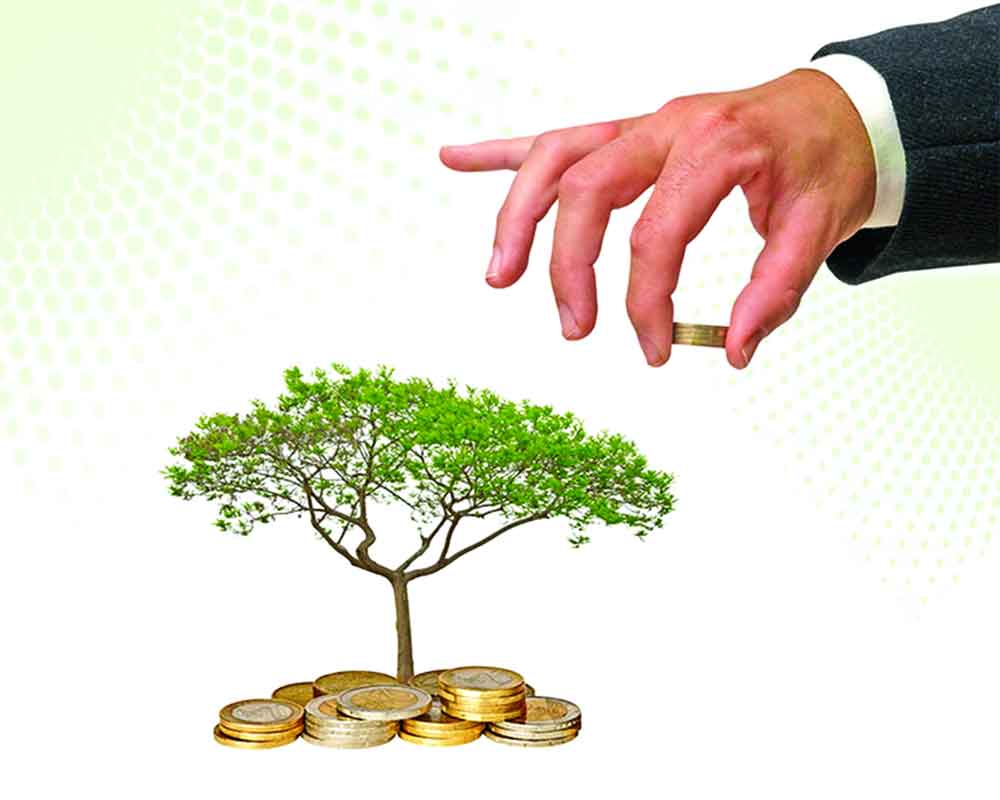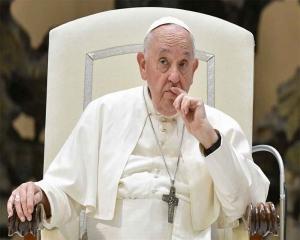The G20 summit emphasises climate action, promoting eco-friendly practices rooted in India's LiFE movement. COP28 discusses carbon credits, market challenges, India's surge, and cooperative solutions for decarbonisation, WRITE SAGAR KISAN WADKAR and NAVEEN KUMAR SINGH
Throughout the G20 summit, a central theme revolved around addressing climate change, particularly through the endorsement of climate finance, technology, and equitable energy transitions for developing nations. The LiFE movement, grounded in India's sustainable traditions, promotes eco-friendly practices. During a special forum at the G20 Presidency COP28, the president underscored climate action as an opportunity for growth, urging global unity, action, and commitment to achieve the 1.5-degree goal while ensuring inclusivity for all.
Concept of Carbon Credit
In the ongoing discussions at COP28, the issue of carbon credits holds significant relevance. Carbon credits play a crucial role in international efforts to mitigate climate change, serving as a unit of measurement for reducing greenhouse gas emissions. Typically, one carbon credit is equivalent to one ton of carbon dioxide (CO2) or its equivalent. Once issued in the form of a carbon credit certificate by a government or any other recognised body, this carbon credit becomes tradable in nature.
The concept operates by incentivising projects and initiatives that reduce or remove emissions, offering them carbon credits as recognition for their contribution to environmental sustainability.
History of Carbon Market
The Conference of the Parties (COP), established as the supreme decision-making body of the United Nations Framework Convention on Climate Change (UNFCCC) in 1992 during the Earth Summit in Rio de Janeiro, convenes annually to discuss strategies for combating climate change. The inaugural COP took place in 1995, marking the beginning of a series of meetings that have played a pivotal role in international efforts to address climate change.
In 1997, the concept of carbon commodification gained prominence with the Kyoto Protocol, and it further progressed with the Paris Agreement in 2015. Although the roots of carbon commodification trace back to the 1960s, its formal structure materialised after the Kyoto Protocol. While the instituted mechanisms cannot be labelled outright failures, they faced significant constraints. For instance, some developed countries did not ratify the protocol. Moreover, there was disagreement between developed and developing nations: emissions reductions were mandatory for developed countries but voluntary for developing ones. This was accompanied by the over allocation of emission allowances to certain countries, causing a surplus of carbon credits in the market and consequently driving down their value. This was further compounded by people's perceptions about the credibility of carbon projects.
Efforts were made to address these issues with the Paris Agreement in 2015, introducing global initiatives such as Nationally Determined Contributions and provisions for financial support to developing countries.
Deliberations during COP28
Currently, COP28 is in progress in the UAE, where discussions are underway to advance various work streams. The major agenda is to implement the Paris Agreement. COP28 is an opportunity to identify global solutions for limiting global temperature rise to 1.5 degrees, as agreed during the Paris Agreement, inform countries’ preparations for revised and more ambitious Nationally Determined Contributions (NDC) due by 2025, accelerate the green transition that is already happening and ultimately achieve the delivery of the Paris Agreement goals. These include crucial issues, such as
- finalising the details of the loss and damage finance facility to assist vulnerable communities in coping with immediate climate impacts;
- working on a global financial goal to support developing countries in their climate change mitigation and adaptation endeavours;
- hastening both an energy transition and a just transition; and
- addressing the substantial emissions gap.
The outcomes of these deliberations at COP28 will contribute to shaping the global response to climate change and steering the world towards a more sustainable and resilient future.
Issue of Carbon Market and Need for Institutionalisation
The carbon credits market, essential for mitigating climate change, is plagued by opacity due to its intricate structure. With numerous projects generating credits and a myriad of market participants engaging in trades, the lack of a centralised regulatory structure creates gaps in transparency. This multifaceted dynamic results in a situation reminiscent of "one step forward, two steps backward."
One of the critical issues lies in the absence of a requirement for disclosing the price paid for carbon credits. This lack of transparency allows organisations to potentially misrepresent their commitment to offsetting emissions. Some may purposefully miscalculate their carbon footprint or purchase cheaper credits that might not withstand standardised scrutiny, leading to instances of "greenwashing."
A significant hurdle in today's carbon credit markets is the lack of standardised followup for projects that apply for carbon credits. Many projects, unable to meet their carbon mitigation commitments, sell their credits to third parties, falling short of achieving the ultimate goal of net-zero emissions. This raises questions about the effectiveness of carbon credit initiatives and the need for more stringent oversight.
Efforts have been made to enhance transparency in carbon credit prices by compiling trading data from market players and accredited registries like The Gold Standard, Climate Action Reserve, Verified Carbon Standard, and the American Carbon Registry. However, challenges persist, leaving room for potential fraud or dubious activity in emissions trading markets. As a major discussion, COP28 introduces the creation of a global carbon market which will be overseen by the supervisory body. This is indeed a welcome step as it tries to bring credibility and transparency to the carbon market.
India's Carbon Market Surge
India has advanced its decarbonisation strategy by introducing two pivotal regulations aimed at tackling opacity: the Carbon Credit Trading Scheme and the Green Credit Programme Implementation Rules. Between 2010 and 2022, India not only issued 35.94 million Carbon Credits but also actively participated in trading these credits on the global international markets. Now the introduced regulations are supposed to provide more incentive to the corporate, NGOs, farmers and other individuals with the goal of achieving the country’s nationally determined contributions.
The Carbon Credit Trading Scheme implemented by the Ministry of Power, Government of India caters to big players in the carbon landscape working on “cap” and “trade” mechanisms. The Green Credit Programme Implementation Rules, to be implemented by the Ministry of Environment, Forest and Climate Change, Government of India, is meant to bring structural reforms and transparency in “Voluntary Carbon Market”. These regulations provide a framework for transparent transactions and adherence to international standards.
However, mere introduction of such regulations are not sufficient. As per a study conducted by Consultative Group for International Agricultural Research (CGIAR) and Transforming Agrifood Systems in South Asia (TAFSSA), the carbon projects being conducted at present are not able provide monetary benefits to the farmers which had been attributed to various factors like need of local implementation partner, limited awareness among farmers about carbon credits and lack of regulated marketplaces makes projects financially unsustainable. Thus, India requires a proper Institutional Management system for overseeing and managing carbon and green credits effectively. Now, it cannot be denied that carbon projects are only going to increase in the coming future with special focus on farmers and other micro level projects. The Green Credit Programme encompasses diverse sectors, including tree plantation, water conservation, sustainable agriculture, waste management, air pollution reduction, mangrove conservation, ecomark initiatives, and sustainable building and infrastructure. It seeks to create a market-based mechanism, offering Green Credits as incentives to individuals, cooperatives, urban and rural local bodies, private sectors, industries, and organisations for environmentally positive actions can be a game changer in this. The programme being voluntary in nature can bring more positives which is also evident as though still in draft stage many organisations have shown their interest in enrolling with the programme.
Cooperatives-Community-Based Solution for Decarbonisation
Cooperatives, as community-driven organisations, possess inherent mechanisms to address social, economic, and environmental concerns, making them ideal institutional frameworks for decarbonisation efforts. These cooperative structures inherently integrate efforts across these spheres, offering a comprehensive approach to tackle the challenges of reducing carbon emissions. Throughout the COVID-19 pandemic, cooperatives have demonstrated their resilience, further emphasising their effectiveness as versatile entities capable of enduring and adapting in challenging times.
In India, we have two types of cooperatives: credit and non-credit. As per NCUI, 2018 statistical profile, there are 8,54,000 cooperative units in India, of which 1,77,000 units (20 per cent) are credit cooperatives. The remaining units engaged in a variety of non-credit cooperative activities, such as textiles, hospitals, services, industrial, producer, processing, dairy, fisheries, sugar, marketing, consumer, labour, housing, etc. The outreach of the cooperatives in the farm sector is quite high. About 98,000 PACS are spread across 91 per cent of total villages of India. It is estimated that around 30 crore people including 13 crore framers in India are directly connected to cooperatives. India has recognised their importance and established a separate Ministry of Cooperation in July 2021 to provide administrative, legal, and policy frameworks to strengthen this sector. This has sparked renewed enthusiasm amongst cooperators and stakeholders. Numerous initiatives have been launched to bolster the cooperative movement, signaling a revitalised effort towards its enhancement and expansion.
The key initiatives of aligning with decarbonisation strategies are as follows:
- Model bylaws for PACS, the fundamental agricultural cooperatives can drive India's decarbonisation strategy by fostering sustainable agricultural practices, reducing emissions, and supporting farmers' income;
- Three new multi-state cooperative societies in the areas of quality and climate-resilient seed production and distribution, organic farming and certification and export marketing. These multi-State cooperative societies focus on sustainable practices that reduce carbon emissions, encourage climate-resilient agriculture, and promote eco-friendly products in the market, collectively contributing significantly to the broader decarbonisation strategy;
- World's Largest Grain Storage Plan in Cooperative Sector aims to boost PACS infrastructure, reducing food grain wastage, enhancing food security, and empowering farmers economically, aligning with the decarbonisation strategy;
- The Solar Cooperative in Dhundi Village, Gujarat, serves as a pioneering model for India's decarbonisation efforts. It monetises solar energy, offers rural electricity solutions, and provides farmers with sustainable incomes. Its replicable nature aligns with India's goals of cutting carbon emissions and fostering clean energy practices nationwide;
- Bio-ethanol policy via sugar cooperatives can significantly contribute to the bio-revolution by utilising agricultural resources for clean, renewable fuel production, promoting sustainability, reducing waste, and fostering rural development;
- Similarly, housing cooperatives in different states are under redevelopment and given an opportunity they can go for green buildings which fall under the green credit programme of decarbonisation strategy.
Thus, cooperatives, especially agricultural ones, indeed hold a distinctive chance to establish a sustainable food and agriculture value chain. This involves meeting the needs of an expanding global population while ensuring the well-being and economic stability of farmers. Achieving the 1.5 degrees Celsius goal offers business benefits and environmental gains, driving on-farm decarbonisation. Cooperatives' pivotal role extends beyond implementation, nurturing new ventures and integrating sustainable practices with carbon initiatives from COP 28, exemplifying a blueprint for a sustainable future.
(Sagar Kisan Wadkar is Adviser, Research & Study, NCUI; and Naveen Kumar Singh is Research Officer, NCUI, New Delhi)



















